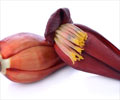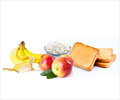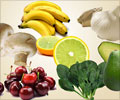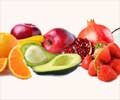A team of Austrian and American researches has discovered that ripening bananas appear bright blue under black light.
Ripening bananas appear bright blue under black light, according to a team of Austrian and American researchers.
Scientists at the University of Innsbruck and Columbia University say that the blue glow is connected to the degradation of chlorophyll that occurs during ripening.Lead researcher Bernhard Krautler says that, in this process, colourless but fluorescing breakdown products of chlorophyll are concentrated in the banana peel.
The usual appearance of bananas is mainly the result of the natural pigments carotenoids, which appear yellow under normal light.
However, when exposed to UV light, known to partygoers as black light, ripening bananas appear blue instead.
According to the researchers there is no difference in between naturally ripened bananas and those ripened with the use of ethylene gas.
Green, unripe bananas do not fluoresce, they say.
Advertisement
As the ripening continues to progress, according to them, the blue glow decreases.
Advertisement
During the study, the researchers used various spectroscopic techniques to analyse the structure of the main breakdown products, and identified a propionate ester group, a modification never seen before in a chlorophyll breakdown product.
They say that this group has a stabilizing effect, and can help understand the unusually long duration of the fluorescing intermediates in bananas.
Fluorescing chlorophyll catabolytes have otherwise only been found as short-lived intermediate products in higher plants.
Krautler has two explanations for why the breakdown of chlorophyll occur differently in bananas than in other higher plants.
"In contrast to humans, many of the animals that eat bananas can see light in the UV range. The blue luminescence of the banana fruit could give them a distinct signal that the fruit is ripe," says the researcher.
Or perhaps the chlorophyll degradation products also serve a biological function for the banana. The amazingly stable catabolytes could help to prolong the viability of the ripening fruit.
Source-ANI
RAS/SK















